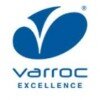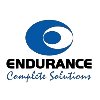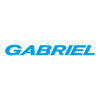
i
Lumax Industries
Filter interviews by
Lumax Industries Interview Questions, Process, and Tips
Lumax Industries Interview Experiences
73 interviews found
I applied via Campus Placement and was interviewed before Jul 2022. There were 3 interview rounds.

What is Plastics and its application
(5 Questions)
- Q1. Family status brother and sister
- Q2. Annual income of family
- Ans.
The annual income of my family is around $80,000.
Annual income includes salaries, bonuses, investments, etc.
It is important to consider all sources of income for an accurate figure.
Income can vary based on family size and expenses.
Example: My family's annual income is $80,000, which includes my salary, my spouse's salary, and rental income from a property.
Example: Factors like inflation and job changes can impact annua
- Q3. What is your brother doing
- Q4. What does your mother
- Q5. What does your father
Interview Preparation Tips
Assistant Engineer Interview Questions asked at other Companies
I applied via Walk-in and was interviewed before Jan 2022. There were 2 interview rounds.

(3 Questions)
- Q1. Basic TPM and 8 pillar
- Q2. How to improve productivity
- Ans.
Improving productivity can be achieved through efficient time management, clear communication, and continuous learning.
Set clear goals and prioritize tasks
Eliminate distractions and delegate tasks when possible
Use technology and automation to streamline processes
Encourage open communication and collaboration within the team
Invest in employee training and development
Regularly evaluate and adjust strategies for improveme
- Q3. What is SMED ? AND BENIFITS
- Ans.
SMED stands for Single Minute Exchange of Die. It is a lean manufacturing technique used to reduce setup time.
SMED helps in reducing the time taken to changeover from one production process to another
It involves breaking down the setup process into smaller steps and converting internal setup to external setup
Benefits of SMED include increased productivity, reduced inventory, improved quality, and increased flexibility
E...
Interview Preparation Tips
Engineer Interview Questions asked at other Companies
I applied via Referral and was interviewed in Jan 2022. There were 2 interview rounds.

(1 Question)
- Q1. Why are you looking for a change?
Interview Preparation Tips
Production Manager Interview Questions asked at other Companies
Interview Questionnaire
5 Questions
- Q1. Aap yha nokri q krna chahte hai ..
- Q2. Kya aap yha 8 ghante continue work kar payenge
- Q3. Ham apko ki job q de koi karan btaiye
- Q4. Apna introduction dijiye
- Q5. Salary expectation
Interview Preparation Tips
Oprating Engineer Interview Questions asked at other Companies
Lumax Industries interview questions for popular designations
I applied via Referral and was interviewed in May 2021. There was 1 interview round.
Interview Questionnaire
3 Questions
- Q1. 1.Whole day role and responsibilities.
- Q2. 2.All related Standard.
- Q3. 3.5 core tool for quality
- Ans.
The 3.5 core tools for quality are FMEA, Control Plan, SPC, and MSA.
FMEA (Failure Mode and Effects Analysis) helps identify and prevent potential failures in a process or product.
Control Plan outlines the steps to maintain quality during production.
SPC (Statistical Process Control) monitors and controls a process to ensure it stays within acceptable limits.
MSA (Measurement System Analysis) evaluates the measurement sys
Interview Preparation Tips
Process Engineer Interview Questions asked at other Companies
Get interview-ready with Top Lumax Industries Interview Questions
I applied via LinkedIn and was interviewed before Apr 2021. There were 3 interview rounds.

(2 Questions)
- Q1. Brief about yourself
- Q2. Work area - KRA, DWM, technical
(2 Questions)
- Q1. Brief about yourself
- Q2. Work area - DWM, KRA & some technical
Interview Preparation Tips
HR Executive Interview Questions asked at other Companies
Jobs at Lumax Industries
I was interviewed in Jun 2021.
Interview Questionnaire
1 Question
- Q1. Your Ultimate Guide to Answering the Most Common Interview Questions Tell Me About Yourself. How Did You Hear About This Position? Why Do You Want to Work at This Company? Why Do You Want This Job? Wh...
Interview Preparation Tips
Do Your Homework. ...
Practice (Out Loud!) ...
Share Your Story. ...
Provide Evidence & Data. ...
Mirror the Interviewer's Style. ...
Prepare a Few Questions. ...
Ask if They Have Any Hesitations. ...
Say Thanks.
Deployment Engineer Interview Questions asked at other Companies
I applied via Campus Placement and was interviewed in Apr 2021. There was 1 interview round.
Interview Questionnaire
2 Questions
- Q1. Related to my topic
- Q2. Electrical & Electronic
Interview Preparation Tips
Assistant Engineer Interview Questions asked at other Companies
I applied via Walk-in and was interviewed before Jan 2022. There were 2 interview rounds.

(2 Questions)
- Q1. Everyone asked about my family and asked about the old company why did you leave the job from there.
- Q2. Why did you leave the job and what was your salary
Interview Preparation Tips
Quality Assurance Interview Questions asked at other Companies
I applied via Campus Placement and was interviewed in Jul 2021. There was 1 interview round.
Interview Questionnaire
2 Questions
- Q1. Fire and sefty. Fire panel. Security trening. Security work
- Q2. Security register
Interview Preparation Tips
Security Supervisor Interview Questions asked at other Companies
Top trending discussions






Lumax Industries Interview FAQs
The duration of Lumax Industries interview process can vary, but typically it takes about less than 2 weeks to complete.
Recently Viewed
Tell us how to improve this page.
Lumax Industries Interviews By Designations
- Lumax Industries Assistant Engineer Interview Questions
- Lumax Industries Engineer Interview Questions
- Lumax Industries Production Supervisor Interview Questions
- Lumax Industries Senior Engineer Interview Questions
- Lumax Industries Quality Engineer Interview Questions
- Lumax Industries Oprating Engineer Interview Questions
- Lumax Industries Manager Interview Questions
- Lumax Industries Assistant Manager Interview Questions
- Show more
Interview Questions for Popular Designations
Lumax Industries Interview Process
based on 104 interviews
Interview experience
Interview Questions from Similar Companies
Fast track your campus placements
Lumax Industries Reviews and Ratings
based on 1.2k reviews
Rating in categories
|
Assistant Engineer
386
salaries
| ₹0 L/yr - ₹0 L/yr |
|
Assistant Manager
317
salaries
| ₹0 L/yr - ₹0 L/yr |
|
Engineer
315
salaries
| ₹0 L/yr - ₹0 L/yr |
|
Senior Engineer
237
salaries
| ₹0 L/yr - ₹0 L/yr |
|
Oprating Engineer
164
salaries
| ₹0 L/yr - ₹0 L/yr |

Varroc Group

UNO Minda

Bharat Forge

Endurance Technologies
- Home >
- Interviews >
- Lumax Industries Interview Questions














